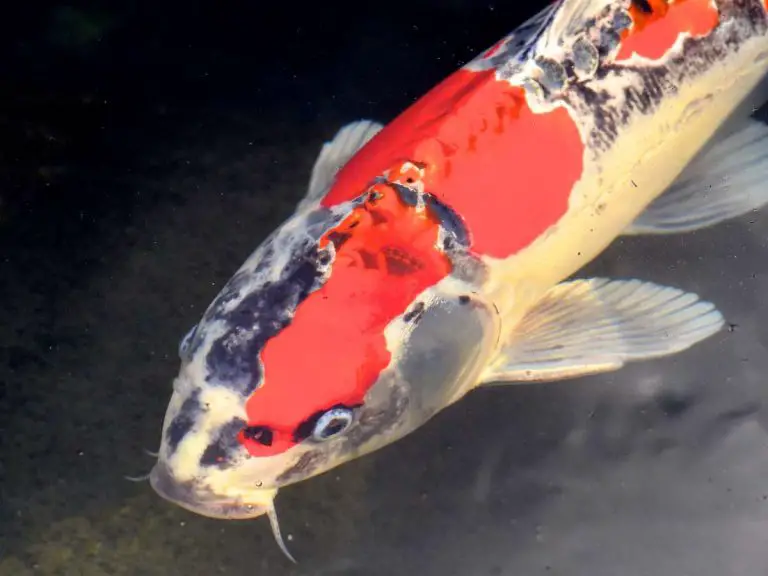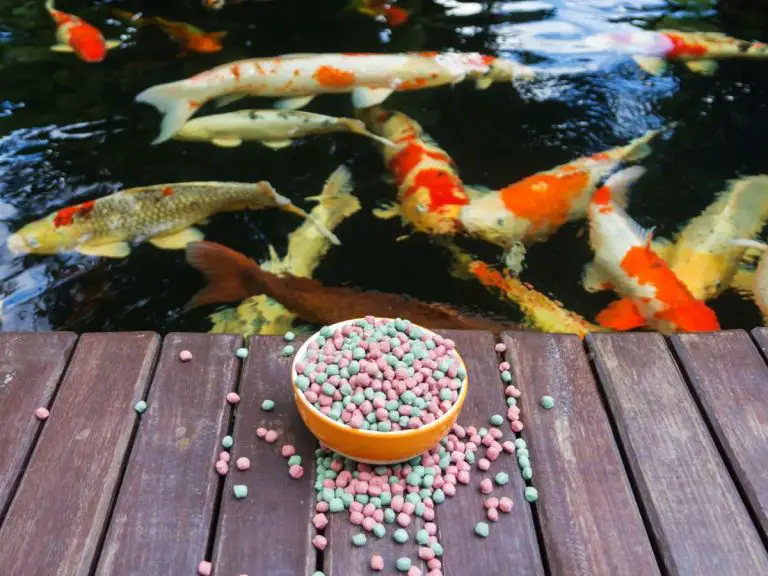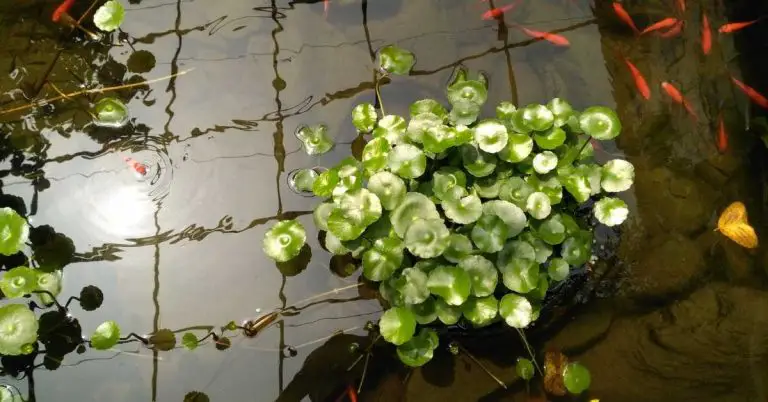Effective Koi Sunburn Treatment AND Prevention: Protect Your Fish From The Sun
Koi fish sunburn treatment is a necessity for many pond enthusiasts – although ideally, they’ll be able to keep their fish from getting sunburned in the first place. If your koi fish live outdoors, then you must be able to effectively treat and prevent sunburn in these beautiful creatures.
There are several options available for effecitvely treating koi sunburn., ranging from natural remedies to over-the-counter treatments. By following the right steps, you can help alleviate your koi fish’s sunburn and promote their healing. Better still, following some simple strategies can help prevent koi sunburn in the first place.
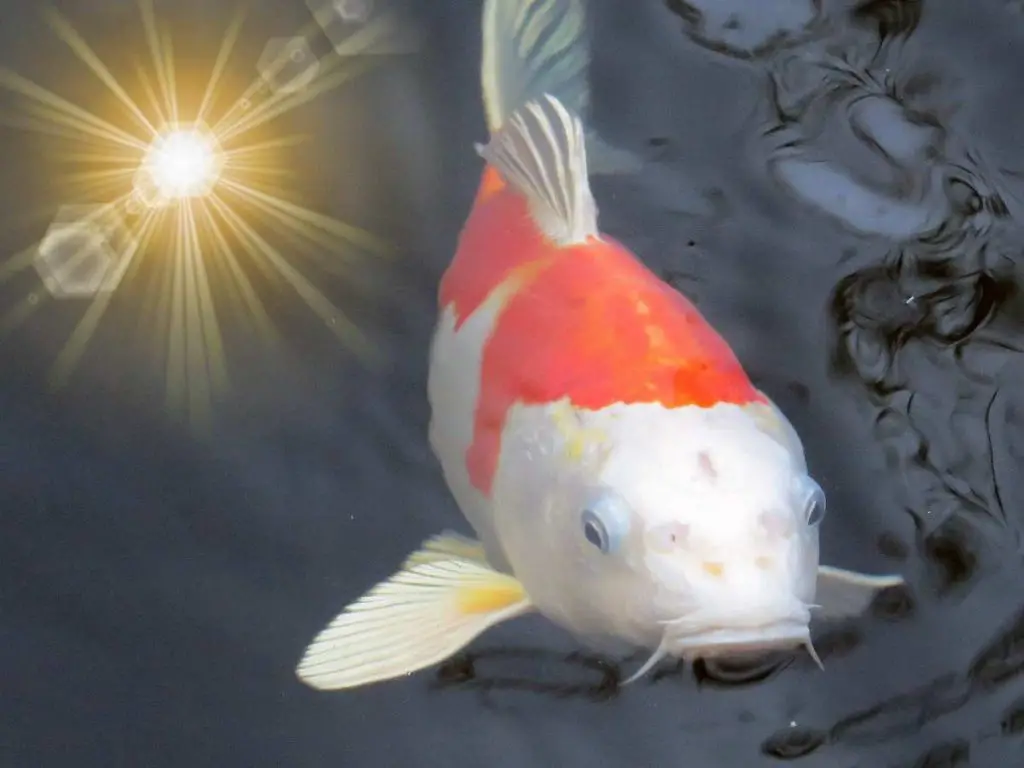
Keep reading to discover the best ways to heal sunburn in koi fish, including preventive measures, natural remedies, and even veterinary treatments for more severe cases. With our guidance, you’ll be able to ensure your koi fish recover quickly and comfortably from sunburn.
Can koi fish get sunburned?
Believe it or not, koi fish can get sunburned if they don’t have the right pond and shading conditions.
When it comes to our beloved koi fish, sunburn might not be the first thing that comes to mind. But these beautiful creatures can actually suffer from sunburn, just like we do.
That’s right, those delicate fishy skins are susceptible to the harmful rays of the sun, and it’s important for us to understand the causes and symptoms of sunburn in koi fish.
So, what exactly causes sunburn in our underwater friends? Well, it all comes down to their thin and sensitive skin. Koi fish have very little protective pigmentation, making them more prone to sun damage. When they are overexposed to UV rays, their skin can become red, inflamed, and even blistered.
Just like us, they can also experience pain and discomfort, and if left untreated, their condition can worsen.
| Common signs of sunburn in koi fish: |
|---|
| Red or inflamed skin |
| Blistering or peeling of the skin |
| Discomfort or pain when touched |
It’s crucial for pond owners to recognize these signs and take prompt action to treat sunburn in koi fish.
Remember, they rely on us for their well-being, and ignoring their pain is simply not an option. By understanding the causes and symptoms of sunburn, we can be proactive in providing relief and improving their quality of life.
How to Prevent Sunburn in Koi Fish: Comprehensive Guide
Sunburn in koi fish is a concern that many pond owners might overlook. However, just like other animals without a protective fur or hair cover, koi can suffer from sunburn when exposed to excessive direct sunlight. Ensuring the well-being of your koi fish means safeguarding them from the harmful effects of the sun.
Here’s a detailed guide to help you achieve just that:
- Limit Direct Sunlight Exposure:
- Strategic Shading: Consider installing pond covers or creating shaded areas to reduce sun exposure. This not only protects your koi but also helps in maintaining water temperature.
- Avoid Peak Sun Hours: The sun’s rays are most intense between 10 am and 4 pm. Schedule feeding or maintenance tasks outside these hours to minimize direct sunlight exposure.
- Optimize Pond Environment:
- Balanced Design: Ensure your pond has a mix of plants, rocks, and other elements to offer natural shade and protection. This balance also aids in water quality maintenance.
- Floating Plants: Incorporate floating plants like water hyacinth, water lettuce, water lotus, and waterlilies. They provide shade and enhance pond aesthetics.
- Regular Maintenance: A clean pond is less likely to foster harmful algae and bacteria that can exacerbate sunburn risks. Regularly remove debris and monitor water quality.
- Recognize Sunburn Signs:
- Initial Stages: Look for redness or a red “rash” on the dorsal area, which can resemble a scrape.
- Progressive Symptoms: As sunburn worsens, the slime coat may dry up, turn opaque, and start flaking. The skin might thicken, scales may blister, and lesions can form.
- Severe Cases: Ulcerations can develop from worsening lesions, posing life-threatening risks. If ulcerations occur, consider treatments like medicated food, topical treatments, injections, or antibiotic dips.
- Factors Contributing to Sunburn:
- Pond Depth: Deeper water reduces UV light penetration, offering koi a refuge from harmful rays in shallower areas.
- Water Clarity: Crystal clear water allows UV rays to penetrate deeper, increasing sunburn risks.
- Dissolved Oxygen Levels: Warm water holds less dissolved oxygen. Ensure adequate oxygen levels to prevent koi from seeking oxygen near the surface, where they’re more exposed to sunlight.
- Surface Swimming: Some koi prefer staying near the surface, increasing their sun exposure.
- Slime Coat Health: A robust slime coat protects koi from sunburn. Treatments or dips that affect the slime coat can increase sunburn susceptibility.
- Additional Sunburn Prevention Measures:
- External Shade: Use trees or man-made structures like sail cloths, decks, pergolas, or tight-knit netting to shade the pond.
- In-Pond Shade: Consider adding underwater caves, tunnels, or plastic tubing at the pond’s bottom. These also protect koi from predators.
- Pond Dye: Non-toxic dyes, especially blue and black, can block harmful UV rays and reduce algae growth by limiting sunlight.
- Floating Islands: These can range from simple styrofoam pieces to intricate islands with foliage, offering additional shade.
By diligently implementing these measures, you can significantly reduce the risk of sunburn in your koi fish, ensuring their health and happiness throughout the sunny months. Remember, proactive prevention is always more effective than reactive treatment!
Natural remedies and approaches for treating sunburn in koi fish
| Remedy | Steps |
|---|---|
| Salt Baths | Purpose: Treat minor sunburns and skin irritations. Procedure: Dissolve pond/aquarium salt in separate pond water and introduce to the pond. Use around 0.3% concentration. Duration: 5 to 30 minutes, based on sunburn severity. Caution: Avoid overuse and ensure correct dosage. |
| Water Quality | pH Levels: Maintain between 7.0 and 8.6. Filtration: Use a good system to remove toxins and waste. Regular maintenance is crucial. Aeration: Ensure adequate oxygen levels, stable temperatures, and promote beneficial bacteria growth. |
| UV Protection | Pond Dyes: Use non-toxic dyes to reduce UV penetration and limit algae growth. Aquatic Plants: Introduce plants like water lilies and lotus for shade and oxygenation. They also offer refuge from direct sunlight. |
| Regular Observation | Monitoring: Observe koi for signs of distress, unusual behavior, or physical changes. Quarantine: If a koi shows severe signs of sunburn or distress, consider moving it to a quarantine tank for closer observation and treatment. |
Sunburned koi fish require gentle care to soothe their damaged skin. But many natural remedies that are often beneficial for humans may not work on koi skin. So it’s crucial to prioritize the safety and well-being of the koi fish and rely on proven treatments and preventive measures.
By adopting these alternative approaches and regularly monitoring the pond environment and the koi fish, you can ensure their well-being and reduce the risks associated with sunburn and other potential health issues.
Salt Baths
Salt baths can be beneficial for treating minor sunburns and other skin irritations in koi fish. The salt aids in the regeneration of the fish’s protective slime coat and can offer relief from minor irritations.
- Procedure: Dissolve pond or aquarium salt in a separate container of pond water. Once dissolved, slowly introduce this saline solution to the pond. Ensure you follow recommended dosages, typically around 0.3% (3 grams per liter of water) for therapeutic purposes.
- Duration: A salt bath treatment can last anywhere from 5 to 30 minutes, depending on the severity of the sunburn and the fish’s condition. Always monitor the fish during the treatment.
- Caution: Overuse of salt or incorrect dosages can harm the fish and other aquatic life. It’s essential to ensure the right concentration and not to prolong the treatment beyond the recommended duration.
Maintain Optimal Water Quality
Ensuring a pristine and balanced aquatic environment is paramount for the health of koi fish, especially when addressing issues like sunburn; let’s explore the key components of maintaining optimal water quality.
- pH Levels: Koi fish thrive in water with a pH level between 7.0 and 8.6. Regularly test the water and adjust the pH levels if necessary using appropriate products.
- Filtration: A good filtration system removes harmful toxins, debris, and waste products, ensuring clean water for the koi. Regularly clean and maintain the filters.
- Aeration: Proper aeration ensures adequate oxygen levels in the pond, essential for koi health. It also aids in maintaining stable water temperatures and promoting beneficial bacteria growth.
Related: koi pond water hardness
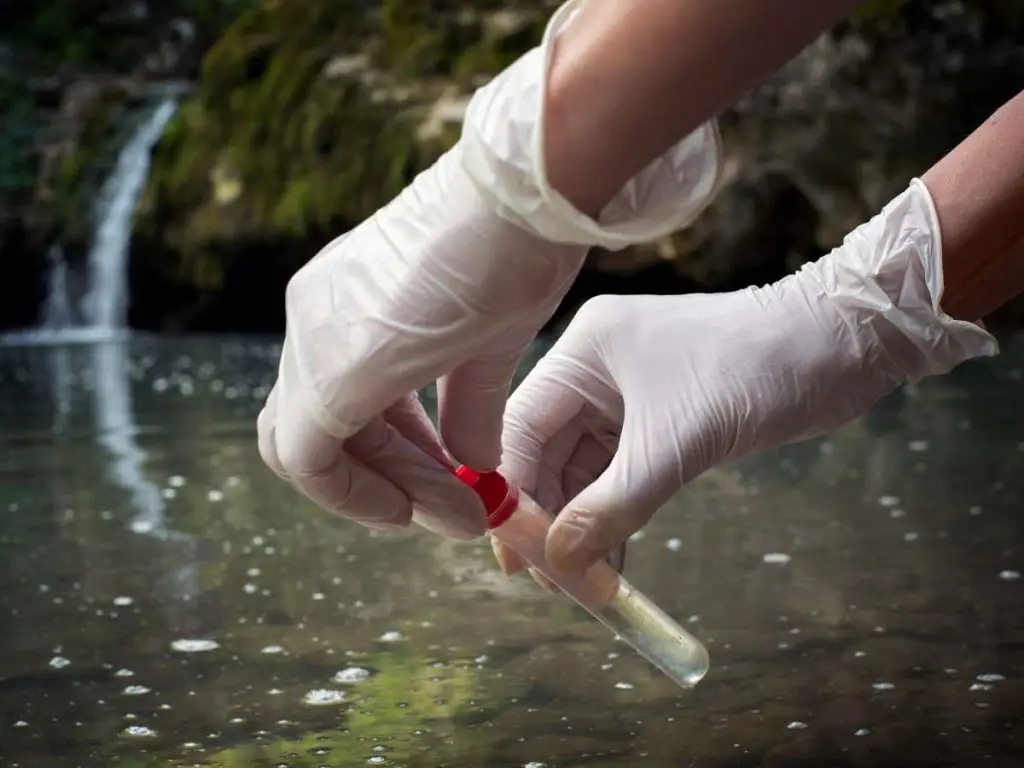
UV Protection
Shielding koi fish from the sun’s harsh ultraviolet rays is essential in preventing sunburn, and there are several methods to provide this protection; let’s delve into the effective UV protection strategies for your pond.
Non-toxic pond dyes can provide a protective layer against harmful UV rays. These dyes tint the water, reducing UV penetration and also limiting algae growth by blocking sunlight.
Introducing aquatic plants not only provides shade but also helps in oxygenating the water. Plants like water lilies and lotus can cover significant surface areas, offering refuge from direct sunlight.
Regular Observation
Consistent and attentive monitoring of your koi fish is crucial for early detection of sunburn and other potential issues; let’s discuss the importance and methods of regular observation.
So regularly observe your koi fish for any signs of distress, unusual behavior, or physical changes. Early detection of issues can lead to more effective interventions.
And if a koi shows severe signs of sunburn or distress, consider moving it to a quarantine tank. This allows for closer observation and treatment without affecting other fish or the main pond environment.
Veterinary treatments for severe sunburn in koi fish
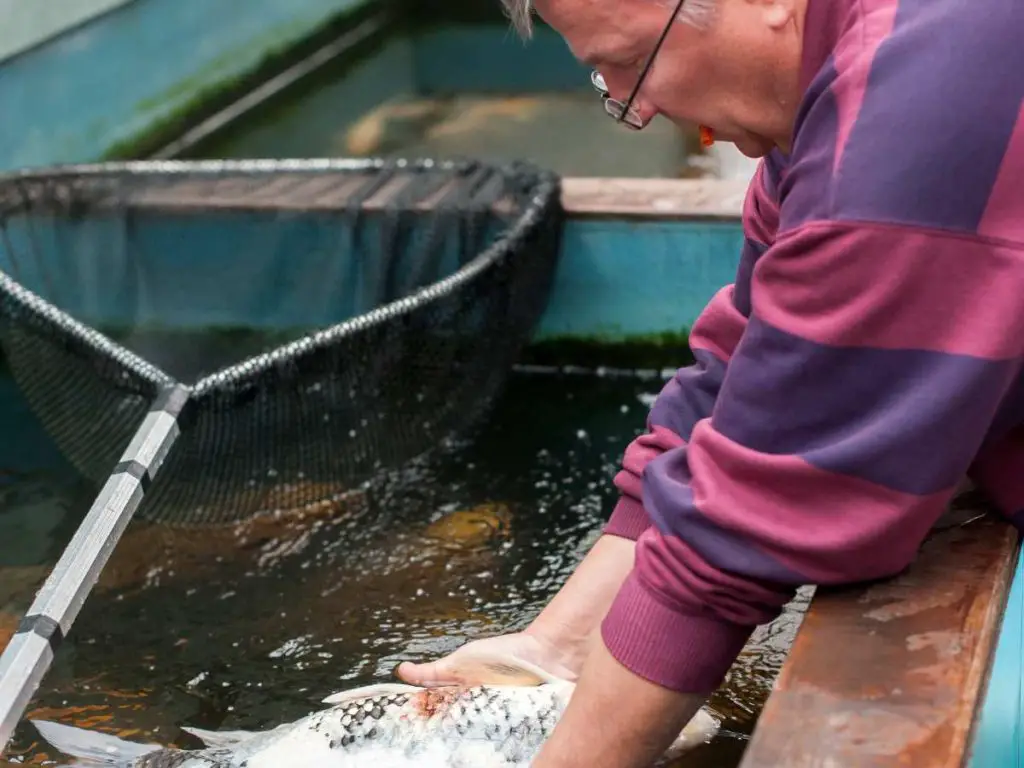
Finally, when it comes to severe cases of sunburn in koi fish, it is essential to seek the help of a veterinarian. These professionals have the expertise and resources to provide effective treatments and ensure the well-being of your fish.
If you notice that your koi fish is experiencing extreme discomfort, swelling, or signs of infection as a result of sunburn, it is crucial to consult a veterinarian immediately. They will be able to assess the severity of the burn and determine the best course of action.
Veterinary treatments for severe sunburn in koi fish may involve medication and specialized procedures. One common treatment method is the application of a topical antibiotic or antiseptic cream to prevent infection and promote healing.
In more severe cases, your veterinarian may recommend administering pain medication or anti-inflammatory drugs to alleviate discomfort and reduce swelling.
In some instances, the fish may require additional medical procedures, such as the removal of dead tissue or the use of bandages to protect the affected areas. These interventions are crucial for preventing secondary infections and promoting proper healing.
Post-treatment care for sunburned koi fish
After your sunburned koi fish have recovered, there are important precautions to take to ensure their continuted well-being.
First and foremost, avoid exposing the treated fish to direct sunlight for an extended period. Sunburned skin is sensitive and can easily get injured. Keep them in a shaded area or provide coverings to protect them from further sun exposure.
Second, try to limit handling and stress on the fish. During the healing process, koi fish may be more sensitive, and unnecessary handling can cause them discomfort or even worsen their condition. Minimize any unnecessary disruptions and ensure a calm environment for their recovery.
Maintaining a clean and comfortable environment for healing
Koi fish, like any other living creature, need a clean and comfortable environment for healing. It’s vital to ensure the water in the pond is clean and properly filtered. Regularly test the water parameters such as pH, ammonia, and nitrate levels. Maintaining optimal water quality can prevent additional stress to the fish and support their healing process.
You should also monitor and regulate the water temperature. Extreme temperatures, both hot and cold, can further stress the fish and hinder their recovery. Use a thermometer to make sure the water remains within the appropriate range for koi fish.
Remember, providing proper post-treatment care is crucial in aiding your sunburned koi fish’s recovery. By following these precautions and maintaining a clean, comfortable environment, you can support their healing process and ensure their overall well-being.
Keep your koi fish ‘cool’

So, there you have it – a comprehensive guide on how to effectively treat sunburn in koi fish. We’ve covered everything from understanding the causes and symptoms of sunburn in koi fish to providing preventive measures and natural remedies to try. We’ve also discussed over-the-counter treatments and the option of seeking veterinary interventions for severe cases of sunburn.
To quickly recap the main points covered in this article:
- Sunburn in koi fish can be caused by prolonged exposure to the sun, resulting in symptoms such as redness, blistering, and peeling of the skin.
- Early treatment is crucial for the well-being and recovery of the fish.
- Preventive measures such as providing shaded areas in the koi pond can help prevent sunburn.
- In severe cases, consulting a veterinarian may be necessary, who can provide professional treatments to aid in the healing process.
- Post-treatment care involves precautions, maintaining a clean environment, and monitoring the fish’s recovery process.
Armed with all this information, it’s time to take action and provide the best possible care for your sunburned koi fish. Follow the remedies and preventive measures mentioned in this article, and remember to seek professional help if needed. Your little aquatic friends will thank you for it!
Related Questions
Can koi fish wear sunscreen to prevent sunburn?
Unfortunately, koi fish cannot wear sunscreen like humans do. However, you can take preventive measures such as providing shade and using natural remedies to protect them from sunburn.
Can sunburn in koi fish be fatal?
Sunburn itself might not be fatal to koi fish, but if left untreated, it can lead to secondary infections and other health issues, which could potentially be life-threatening. It is important to treat sunburn in koi fish promptly and provide proper aftercare to ensure their well-being.
Do koi fish sunbathe?
Yes, koi fish do sunbathe. They often swim near the surface and bask in the sunlight, which helps them synthesize vitamin D. However, prolonged exposure can lead to sunburn, so it’s essential to provide shaded areas in the pond.


